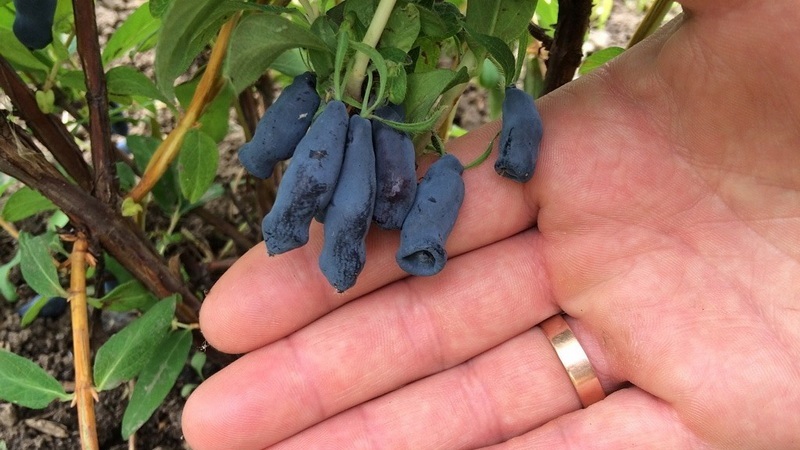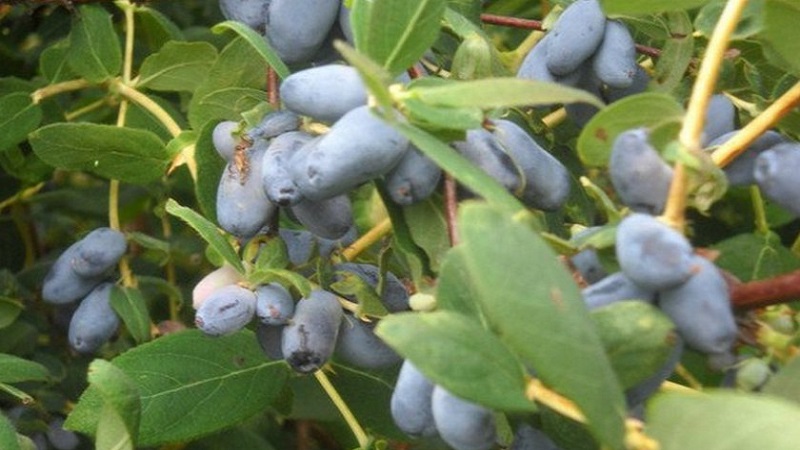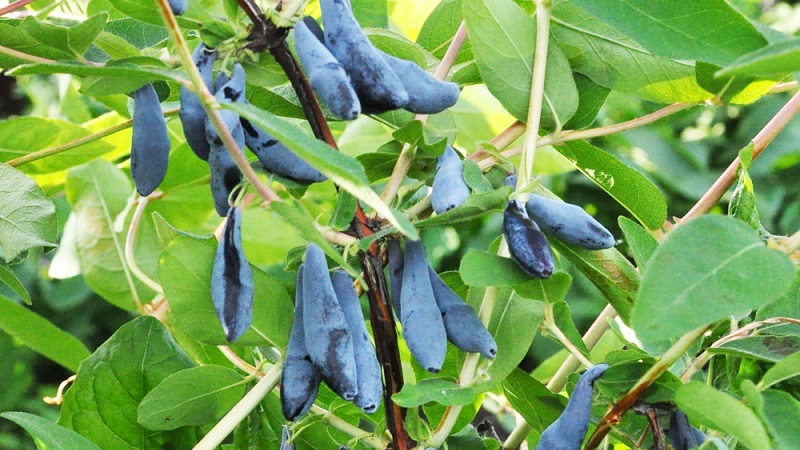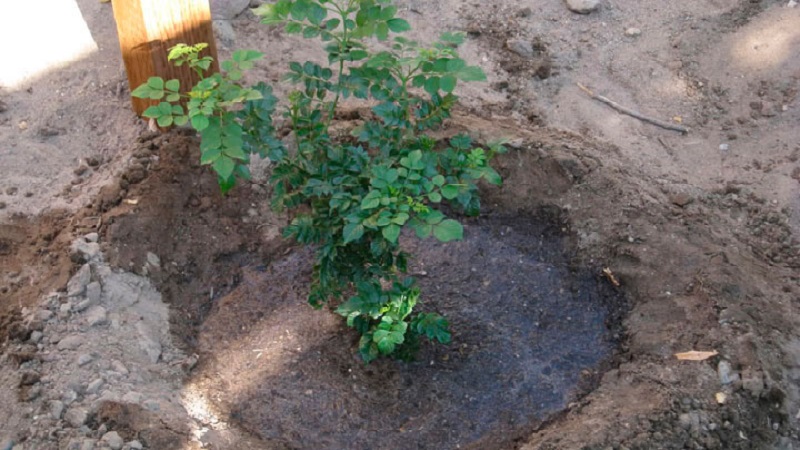Features of growing honeysuckle in Crimea
Edible honeysuckle is a relatively new culture for Crimea, but every year it becomes more and more popular. The taste of berries, early ripening of the crop, attractive plant appearance, high resistance to diseases and pests make this crop attractive to gardeners.
Growing honeysuckle in Crimea has its own characteristics associated with the climatic conditions of the region. Let's tell you more about them.
The content of the article
Does honeysuckle grow in Crimea
The climate in Crimea is characterized by:
- mild winters: the average temperature is + 4 ° С, sometimes with the onset of a thaw it rises to + 15 ° С;
- a small amount of snow - mainly precipitation in winter in the form of rains;
- strong winds.

These conditions adversely affect most varieties of honeysuckle, as:
- the plant needs a dormant period in winter;
- during a thaw, untimely flowering may occur;
- high humidity in winter can have a detrimental effect on the root system - honeysuckle does not like waterlogging.
Hot dry summers and mild wet winters dictate the selection of zoned varietiesadapted to these conditions and having the following characteristics:
- frost resistance;
- the ability to remain dormant during the onset of winter thaws;
- resistance to high summer temperatures and drought;
- lack of repeated autumn and winter flowering.
The best varieties for Crimea
For cultivation in Crimea, Donetsk Botanical Garden offers varieties bred for the steppe and forest-steppe zones: Scythian, Ukrainka, Stepnaya, Donchanka.
Among the varieties of Russian selection for cultivation in the Crimea, Fire Opal and Bogdana stand out.
Fire opal
The variety was bred at the Siberian Research Institute named after I. Lisavenko and registered in the State Register in 2000.

The bush is compact, 1.5 m in diameter, obverse-conical. Has all the characteristic features of the species:
- frost-resistant;
- easily tolerates high summer temperatures;
- high-yielding - gives up to 6 kg of berries from a bush;
- unpretentious in care;
- resistant to diseases and pests;
- practically no shedding of fruits.
The taste of berries is sweet and sour, with a slight bitterness... This honeysuckle requires pollinators, so two more varieties of honeysuckle are planted nearby for cross-pollination.
Read also:
Frost-resistant early ripe variety of honeysuckle "Lakomka"
Scythian
A selection variety of the Donetsk Botanical Garden.
Specifications:
- high drought resistance;
- compact bush - 1 m in diameter;
- low yield - 1 kg of berries from a bush;
- average crumbling - up to 15%;
- does not come out of dormancy in the autumn-winter period, does not bloom again.
Berries have a sweet and sour taste without bitterness.
Reference. Honeysuckle berries contain a lot of vitamin P, which strengthens the capillary walls.
Bogdan
The variety was created at the Pavlovsk station of the All-Russian Institute of Plant Production and was tested at the experimental station in Krasny Kut, Kharkov region.

A bush 1.5 m in diameter has the following features:
- drought-resistant;
- yield 2-2.5 kg of berries from a bush;
- low shedding of fruits;
- considered the best pollinator of the Leningrad selection.
The berries are sweet and sour, with a weak aroma.
Growing honeysuckle in Crimea
For growing honeysuckle in Crimea choose a zoned variety and plant two varieties of pollinators on it.
Choosing a place and a seedling
Planting material is best purchased in containers. - so the root system is not injured during transportation. The seedling should have 3-4 strong shoots.
The place for landing is chosen illuminated - honeysuckle loves the sun, and its lack negatively affects the taste of the fruit and the yield of the bush.
Plant planted in a place protected from the wind into drained soil, since honeysuckle does not tolerate stagnant water.
Landing algorithm
Best period for planting honeysuckle - September and October, since by this time the plant ends its growing season. In spring, sap flow begins early, and if you disturb the bush during this period, it can bloom when the soil has not yet warmed up.

How to plant honeysuckle:
- Dig a planting hole 40-60 cm in size.
- Place a drainage layer on the bottom of the pit - expanded clay, broken brick, pieces of wood.
- Pour a bucket of humus or rotted manure over the drainage, add a glass of ash.
- Fill the soil with a slide into the pit.
- Place the seedling in the hole so that the root collar is 3 cm below the soil level.
- Spread out roots and cover with earth.
- Tamp the soil in the trunk circle.
- Water the seedling abundantly with settled water and mulch the tree trunk circle with dry grass or tree bark.
Seedlings are placed taking into account the size of an adult bush, at a distance of 2.5-3 m from each other.
Reference. Honeysuckle grows and bears fruit in one place for 25-30 years.
Care
Honeysuckle care is simple and consists in watering the plant, if the summer is dry, periodic feeding and pruning.
Watering and feeding
In dry summers, the bushes are watered weekly, 10 liters per bush, with settled and soft water... If there is enough rain, the plantings are not watered, but they make sure that the ground in the near-trunk circle is slightly damp. At the same time, water stagnation is not allowed.
If fertilizers have been introduced into the pit, the plants do not need to be fed for the first two years after planting, they consume reserves. Then fed three times per season:
- in spring - with complex mineral fertilizers with a high nitrogen content;
- in the summer after harvest - double superphosphate;
- for the winter - manure or humus.
Mineral fertilizers are applied to a depth of 20-30 cm, manure or humus is laid in the trunk circle.
Pruning
As a rule, up to 6 years old, bushes do not require radical pruning... 3-4 years cut off extra branches inside the crown of the bush. After 6 years, sanitary pruning is carried out, during which the lower branches lying on the ground and blocking access to the trunk circle are removed. Old dry branches are cut out so that 5-7 strong trunks remain.

For old bushes, stump pruning is possible at a height of 40 cm.
Important! The tops of the shoots are not cut off - this is where most of the flower buds are located.
Conclusion
Thanks to the creation of new varieties in recent decades, honeysuckle has gone beyond its natural range and found itself in the south. Cultivation of a culture in Crimea will be successful if zoned varieties of honeysuckle that can withstand hot dry summers and warm winters are selected for planting.